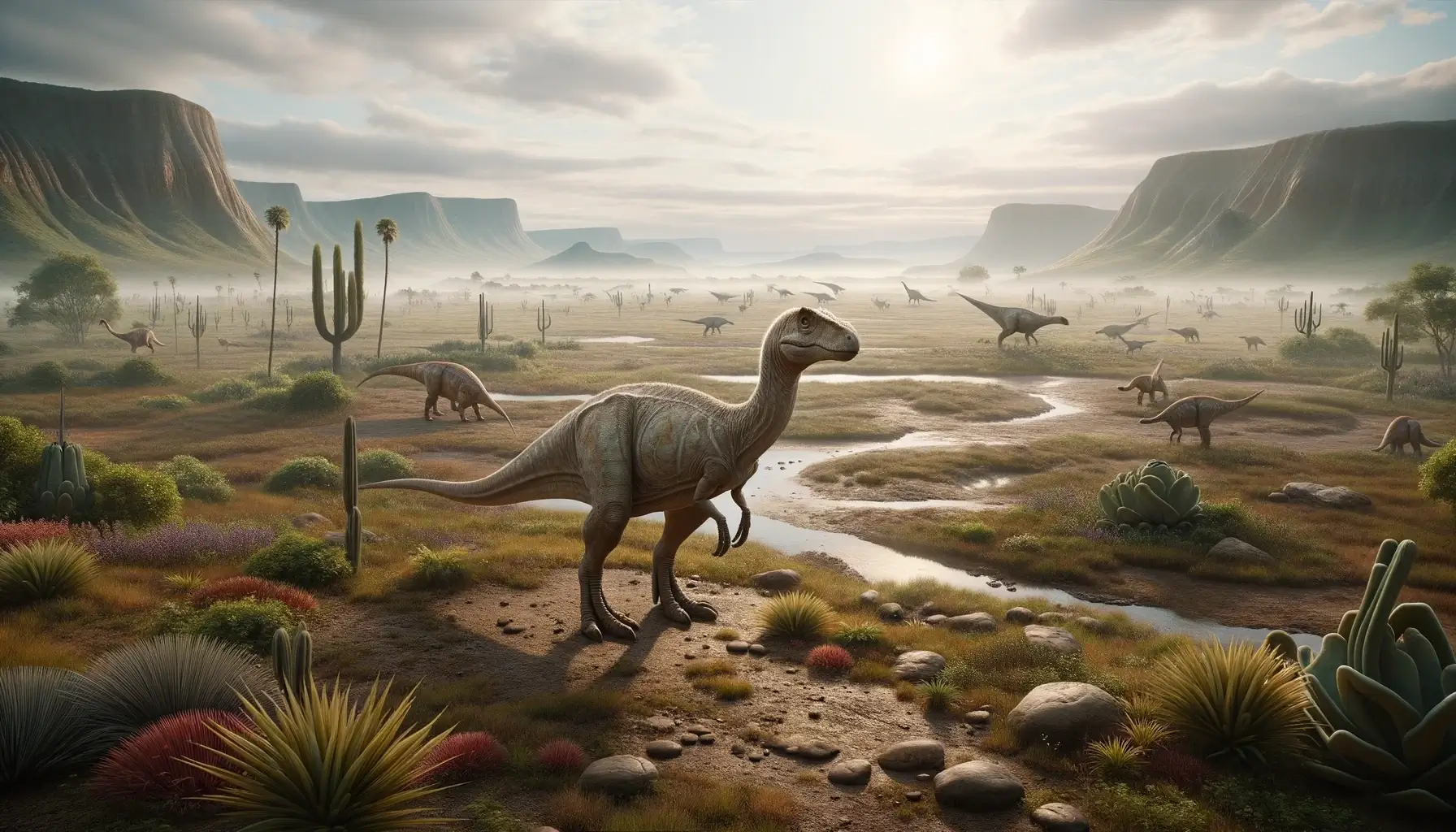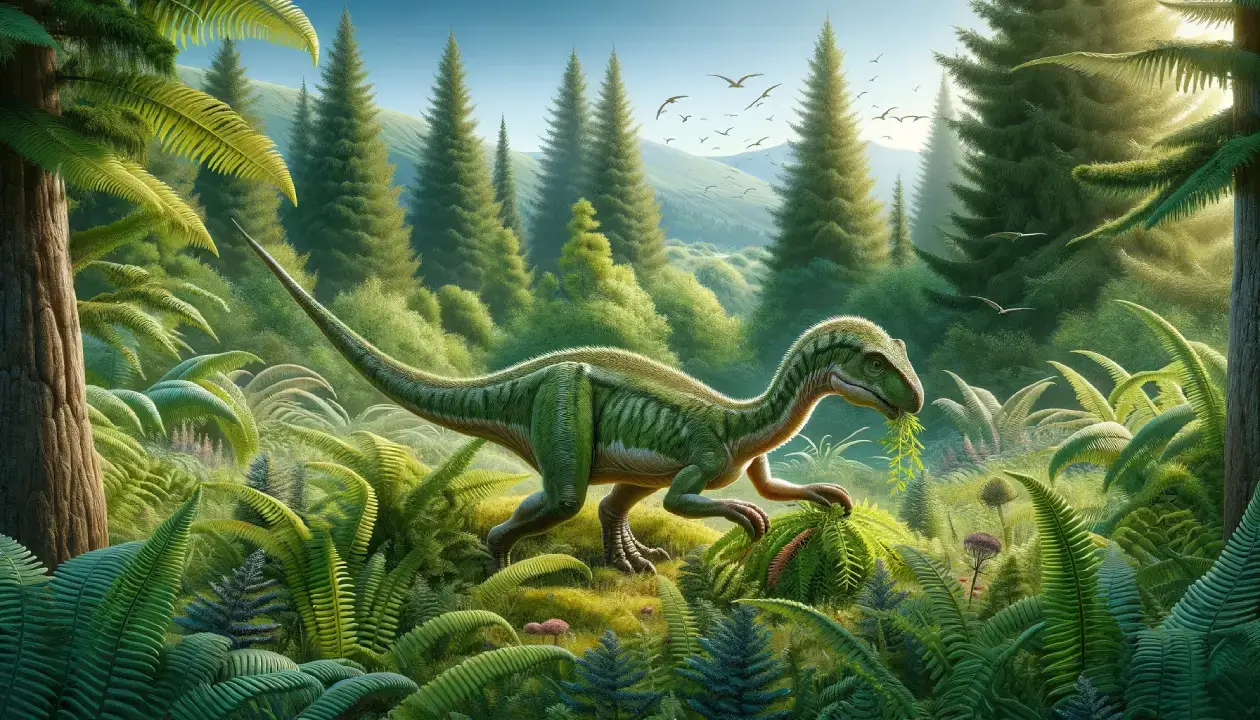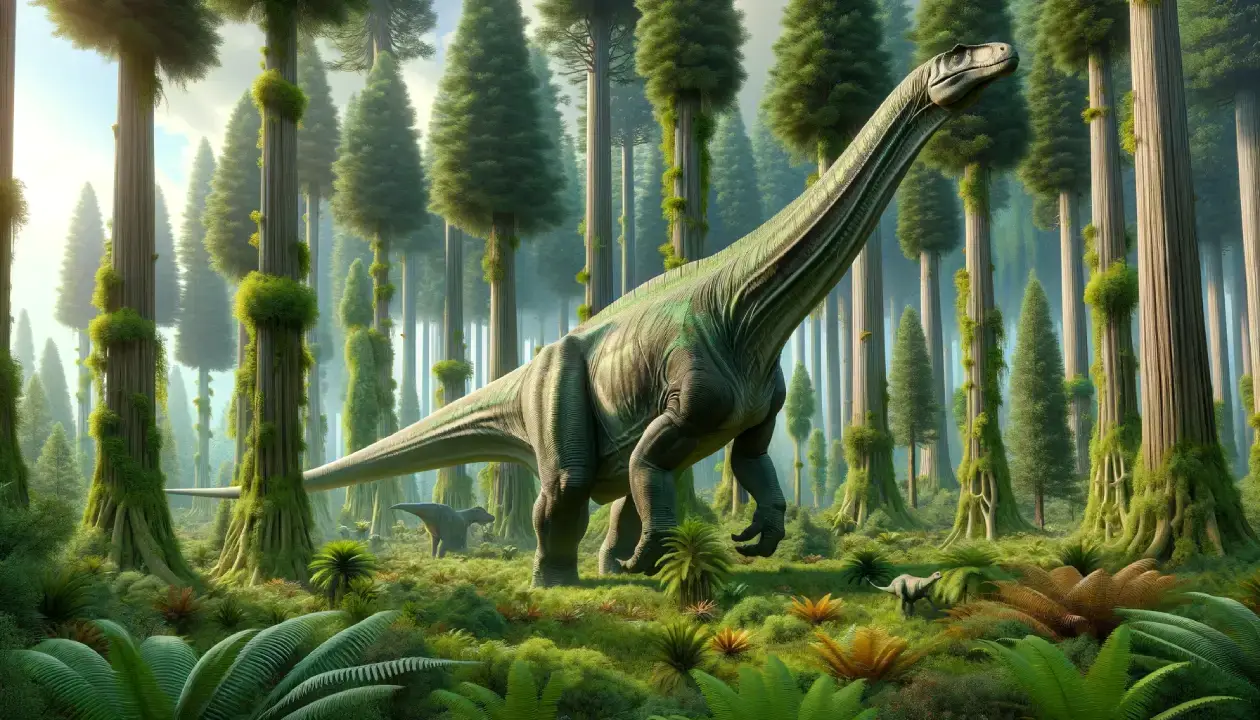Agilisaurus was a nimble herbivorous dinosaur that lived in what is now eastern Asia during the Middle Jurassic period, about 168 to 164 million years ago. It was one of the first dinosaurs to be discovered in China, and its name means ‘agile lizard’. It had a small head, a long tail, and leaf-shaped teeth that were well-adapted to their abrasive, plant-based diets.
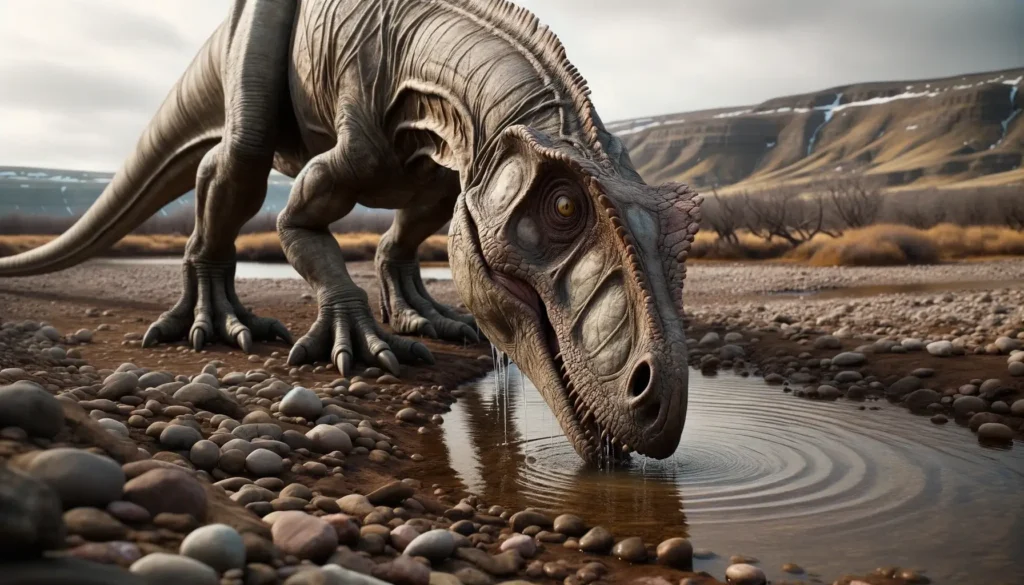
Basic Information
| Feature | Details |
| Time Period | Middle Jurassic (168-164 million years ago) |
| Diet | Herbivore |
| Length | About 2 meters (6.5 feet) |
| Weight | About 40 kilograms (88 pounds) |
| Size | Small |
| Posture | Bipedal or Quadrupedal |
| Locations | China (Sichuan Province) |
| Continent | Asia |
| Type | Ornithopod |
| Habitats | Ridge |
Description of Agilisaurus
Historical Context
Agilisaurus was first discovered in 1984, during the construction of the Zigong Dinosaur Museum in China. It was named and described by Chinese paleontologist Peng Guangzhou in 1990. The name means “”agile lizard””, referring to its lightweight skeleton and long legs. The species name, louderbacki, honors Dr. George Louderback, an American geologist who was the first to recognize dinosaur fossils from the Sichuan Province of China in 1915. Agilisaurus is known from a single complete skeleton and some fragments of other specimens. It is one of the most complete small ornithischian skeletons ever found.
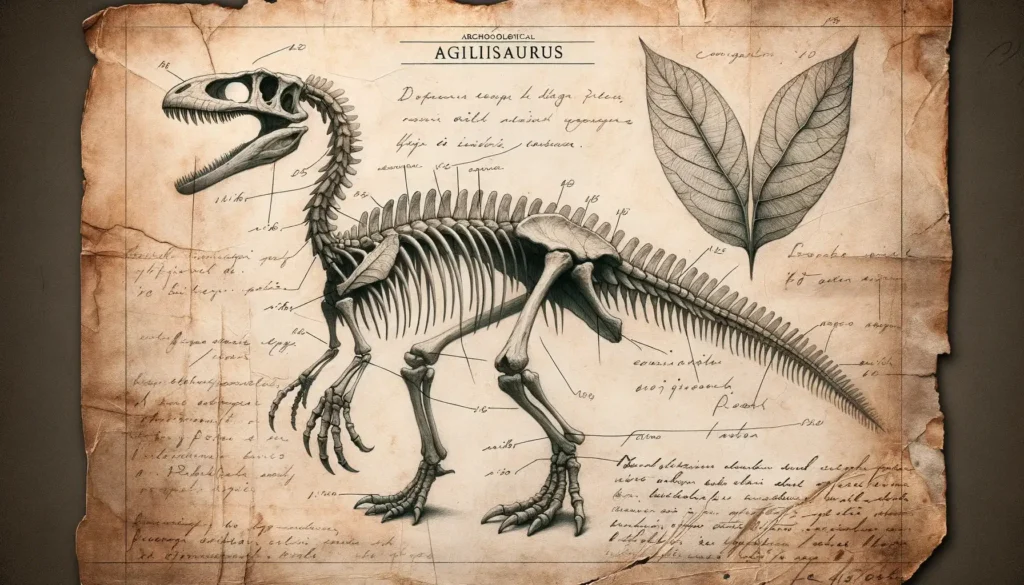
Physical Attributes
Agilisaurus was a small herbivore with a long tail and a short snout. It had a beak-like structure on the ends of both upper and lower jaws to help it crop plant material. Its teeth were spoon-shaped and had wavy enamel, which was well-adapted to their abrasive, plant-based diets. This feature was previously thought to be exclusive to the hadrosaurs, a group of duck-billed dinosaurs that lived later in the Cretaceous Period. Agilisaurus also had bony armor-like structures called osteoderms on its body, which may have provided protection or display.
Feeding Habits
As a herbivore, Agilisaurus fed on plants, mainly ferns, cycads, conifers, and ginkgoes that grew in the ridge habitat of Asia during the Middle Jurassic Period. It probably browsed on plants that were closer to the ground, using its beak and teeth to cut and chew them. It may have swallowed stones (gastroliths) to help grind up the plant material in its stomach.
Unique Features
The most distinctive feature of Agilisaurus was its agility and speed. Its tibia (lower leg bone) was longer than its femur (upper leg bone), indicating that it was an extremely fast bipedal runner that used its long tail for balance. It could also walk on all fours when browsing for food or resting. Agilisaurus was one of the earliest members of the group Euornithopoda, which includes more advanced ornithopods like Iguanodon and Parasaurolophus. It shows some features that are typical of this group, such as an enlarged thumb claw and a reduced fifth toe.
Movement and Speed
Agilisaurus was a bipedal or quadrupedal dinosaur, meaning it could walk on two or four legs. It had short but powerful limbs that supported its light body. Its feet had five toes each, with claws on the first three toes. Its thumb claw was enlarged and may have been used for defense or digging. Agilisaurus was a fast runner, capable of reaching speeds of up to 40 kilometers per hour (25 miles per hour). It used its long tail for balance and steering.
Cultural Impact
Agilisaurus is not very well known among the general public, but it has appeared in some books, documentaries, video games, and toys that feature dinosaurs. Some examples are:
- The book The Complete Dinosaur (2012), edited by M.K. Brett-Surman, Thomas R. Holtz Jr., and James O. Farlow, which includes a chapter on Agilisaurus by Peng Guangzhou.
- The documentary Dinosaur Planet (2003), produced by Discovery Channel, which features Agilisaurus in the episode “”Alpha’s Egg”” as a prey item for a Sinraptor.
- The video game Jurassic World Evolution (2018), developed by Frontier Developments, which allows players to create and manage their own dinosaur park, including Agilisaurus.
- The toy line Jurassic World Dino Rivals (2019), produced by Mattel, which includes an Agilisaurus figure with movable head and tail.
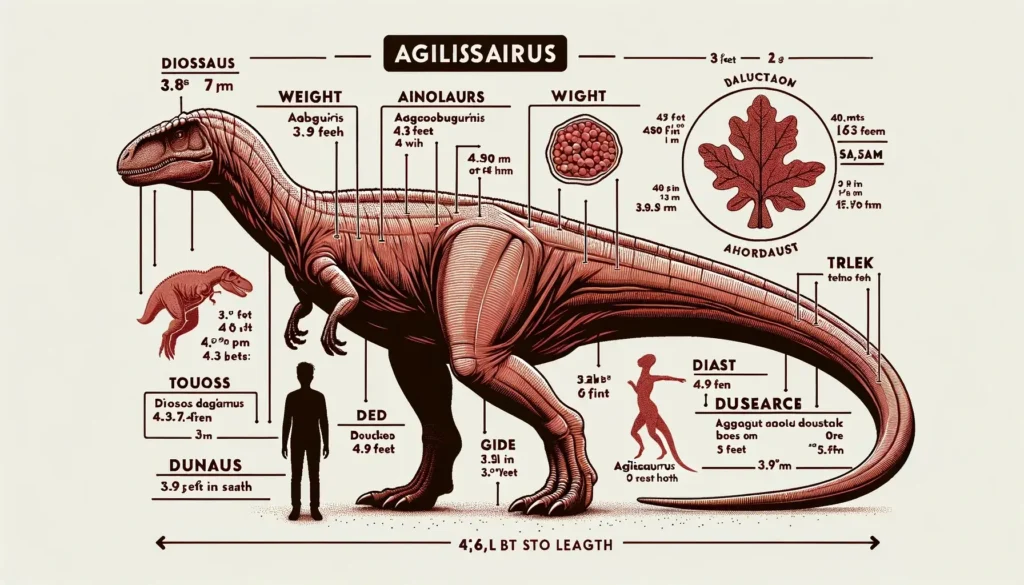
Interesting Facts
- Agilisaurus is related to some of the most famous dinosaurs, such as Iguanodon and Parasaurolophus, which belong to the same group of ornithopods called euornithopods.
- Agilisaurus lived in a diverse and rich ecosystem that included other ornithopods, such as Hexinlusaurus and Yandusaurus, as well as theropods, such as Sinraptor and Monolophosaurus.
- Agilisaurus is one of the few ornithopods that have osteoderms, which are bony plates or spikes embedded in the skin. Osteoderms are more common in other groups of dinosaurs, such as stegosaurs and ankylosaurs.
- Agilisaurus may have lived up to 50 years old, based on the growth rings in its bones.
Related Dinosaurs
- Hexinlusaurus: A close relative of Agilisaurus that also had osteoderms and a beak-like structure, but with more teeth and a longer snout.
- Iguanodon: A distant cousin of Agilisaurus that was one of the first dinosaurs to be discovered and named, with a large thumb spike and a toothless beak.
- Parasaurolophus: A highly derived ornithopod that had a long and hollow crest on its head, used for sound production or display.

